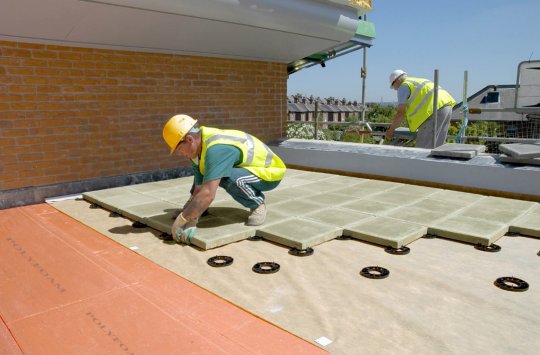Flat roofs are a common choice for commercial buildings and some residential properties due to their modern aesthetics and space-efficient design. However, they come with their own set of challenges when it comes to maintenance. Proper maintenance is key to extending the life of your flat roof and preventing costly repairs. In this blog, we’ll share essential flat roof maintenance tips to help you keep your roof in top condition.
1. Regular Inspections:
One of the most critical aspects of flat roof maintenance is regular inspections. Schedule inspections at least twice a year, ideally in the spring and fall, to assess the condition of your roof. Look for signs of damage, ponding water, debris buildup, and any other issues that may require attention.
2. Clear Debris:
Debris like leaves, branches, and dirt can accumulate on a flat roof, leading to drainage issues and potential damage. Regularly remove debris from the roof’s surface to prevent blockages and ensure proper water runoff.
3. Check Drainage Systems:
Flat roofs rely on drainage systems to prevent water from pooling on the surface. Ensure that the gutters, downspouts, and scuppers are clear of debris and functioning correctly. Proper drainage is crucial for preventing water damage and extending the life of your roof.
4. Address Ponding Water:
Ponding water, or standing water that remains on the roof for more than 48 hours after rain, is a common issue for flat roofs. It can lead to roof deterioration and leaks. If you notice ponding water, address it promptly by improving the roof’s slope or adding additional drains.
5. Inspect Roof Membrane:
The roof membrane is the primary protective layer of a flat roof. Regularly inspect the membrane for signs of cracks, blisters, punctures, or tears. Any damage to the membrane can compromise the roof’s integrity and should be repaired promptly.
6. Seal Roof Penetrations:
Flat roofs often have various penetrations, such as vents, HVAC units, and skylights. Ensure that these penetrations are properly sealed to prevent water intrusion. Check the seals and flashing around these areas during inspections.
7. Maintain Roof Flashing:
Flashing is the material used to seal joints and transitions on a flat roof. It’s essential to maintain and repair flashing as needed to prevent leaks. Loose or damaged flashing should be repaired or replaced promptly.
8. Trim Overhanging Branches:
If your flat roof is near trees, overhanging branches can pose a threat. Trim branches to prevent them from rubbing against or damaging the roof surface. Falling branches can cause severe damage to flat roofs.
9. Prevent Ice Dams:
In colder climates, ice dams can form on flat roofs, leading to water backup and leaks. Proper insulation and ventilation in the attic space can help prevent ice dams. Ensure that the roof is adequately insulated to maintain a consistent temperature.
10. Professional Inspections:
While regular DIY inspections are essential, it’s also crucial to have your flat roof professionally inspected periodically. Roofing professionals can identify issues that may not be immediately apparent and provide expert guidance on necessary repairs or maintenance.
11. Keep Records:
Maintain detailed records of all inspections, repairs, and maintenance activities related to your flat roof. Having a history of your roof’s maintenance can be valuable when discussing warranty claims or selling your property.
12. Roof Coatings:
Consider applying a roof coating to your flat roof. Roof coatings can provide an extra layer of protection, improve energy efficiency, and extend the life of your roof. Consult with a roofing professional to determine if a roof coating is suitable for your roof type.
13. Plan for Roof Replacement:
Flat roofs have a limited lifespan, typically ranging from 15 to 30 years, depending on the materials used. It’s essential to plan for an eventual roof replacement and budget accordingly. Regular maintenance can help maximize the lifespan of your existing roof.
In conclusion, flat roof maintenance is essential for preserving the integrity of your roof and preventing costly repairs. Regular inspections, debris removal, drainage system maintenance, and addressing issues promptly are key to keeping your flat roof in top condition. If you’re unsure about the condition of your flat roof or need assistance with maintenance or repairs, don’t hesitate to consult with a qualified roofing professional. A well-maintained flat roof can provide reliable protection for your property for years to come.
Flat Roofing Orange County https://www.flatroofingorangecounty.com


